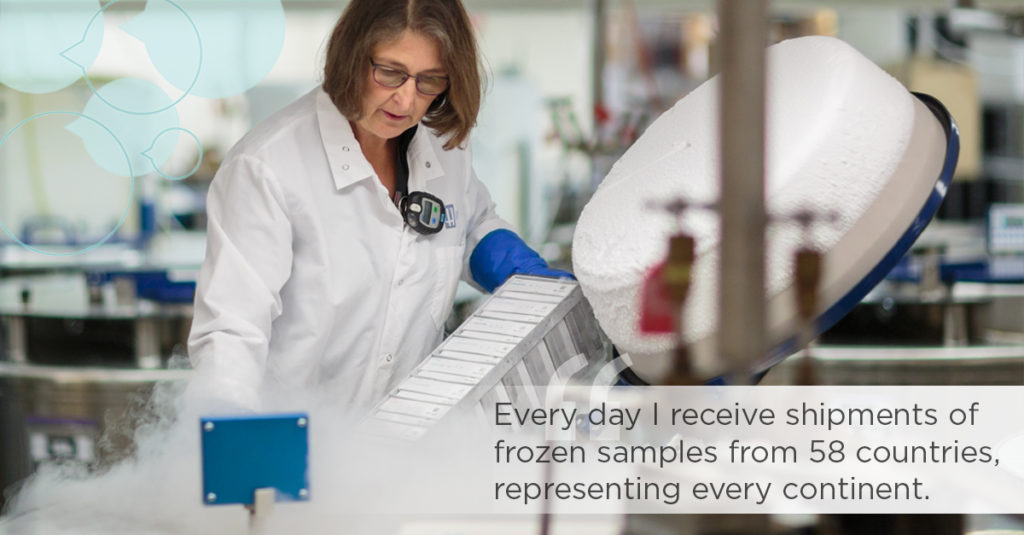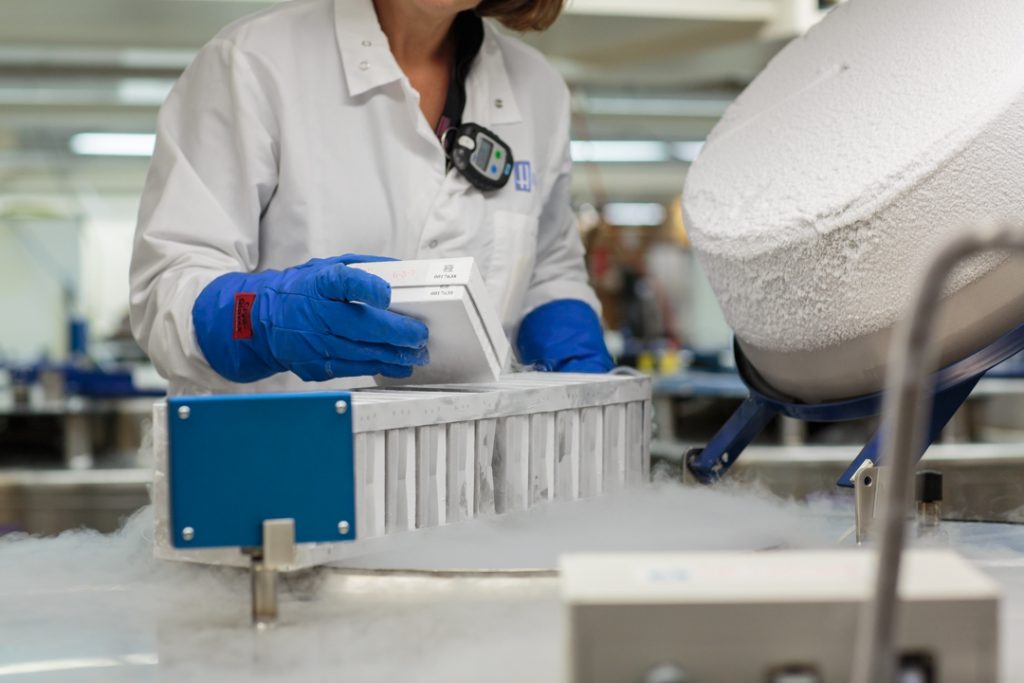
Introducing… a research laboratory assistant
Jean Leishman is a research laboratory assistant at the Clinical Research Lab and Biobank (CRLB). She has been in this role at Hamilton Health Sciences for seven years.
What do you love most about your job/role?
I enjoy the physical and mental tasks associated with locating and retrieving samples from our 3 million inventory. These samples have unique numerical identification and are stored for future retrieval and analysis as part of particular research studies into heart and circulatory health. Many studies have international participants and research partners, and are inextricably linked to population health.
I use liquid nitrogen (-196 degrees Celsius) and dry ice (-109 degrees Celsius) to protect the frozen samples I handle.
What do you find challenging about your role?
My tasks at CRLB are physically demanding and repetitive. The challenge for me is performing these repetitive and physical tasks in a sustainable way for my continued physical health, safety and well-being. There is stress after periods of sustained attention to the details required to ensure process accuracy and sample integrity. Having said this, it is encouraging that CRLB’s effectiveness, in spite of these kinds of challenges for the staff, was recognized with the achievement of ISO 15189 accreditation.
Describe a typical day in your role?
Efficacy of patient treatment plans are decided on analysis of data gathered from properly procured and inventoried samples. Sample quality is important. My daily tasks include achieving and maintaining sample quality.
Every day I receive shipments of frozen samples couriered from 58 countries, representing every continent. I then sort and inventory hundreds of 2mL vials keeping a steely eye for content quality and integrity as well as receive small collections of patient blood and urine from study nurses. I process these samples to the associated study’s procedures until I have high quality aliquots suitable for storage at CRLB or for shipment to other labs for analysis.
When study investigators request it, I’ll relocate 1000’s of samples from the biobank’s 59 large capacity liquid nitrogen tanks.

Tell us about your most gratifying experience at HHS
My expertise and influence is limited in scope and reach. Recognition from those closest to my daily task performance is most relevant and gratifying to me. For example, when study staff or CRLB staff members use my suggestions to implement change or improvement in procedures. The 500 standard operating procedures which are the backbone of our operations at CRLB provide considerable opportunity for streamlining and improvement.
After a difficult patient visit, the subsequent blood collection required time-sensitive processing before same day shipment, a study nurse acknowledged my efficiency and positive attitude while dealing with the extenuating circumstances. They were golden words which will not be soon forgotten.
What’s one thing people would be surprised to learn about your role?
People are surprised that each day I am prepared to process, store or ship samples from 30-40 different studies each with their strict and detailed protocols. I use liquid nitrogen (-196 degrees Celsius) and dry ice (-109 degrees Celsius) to protect the frozen samples I handle until they are thawed for analysis by a research study’s investigator.
But most often, people are surprised to know how much I love going to work every day. And that this state-of-the-art biobank facility is located under a parking garage! Who would have guessed!
